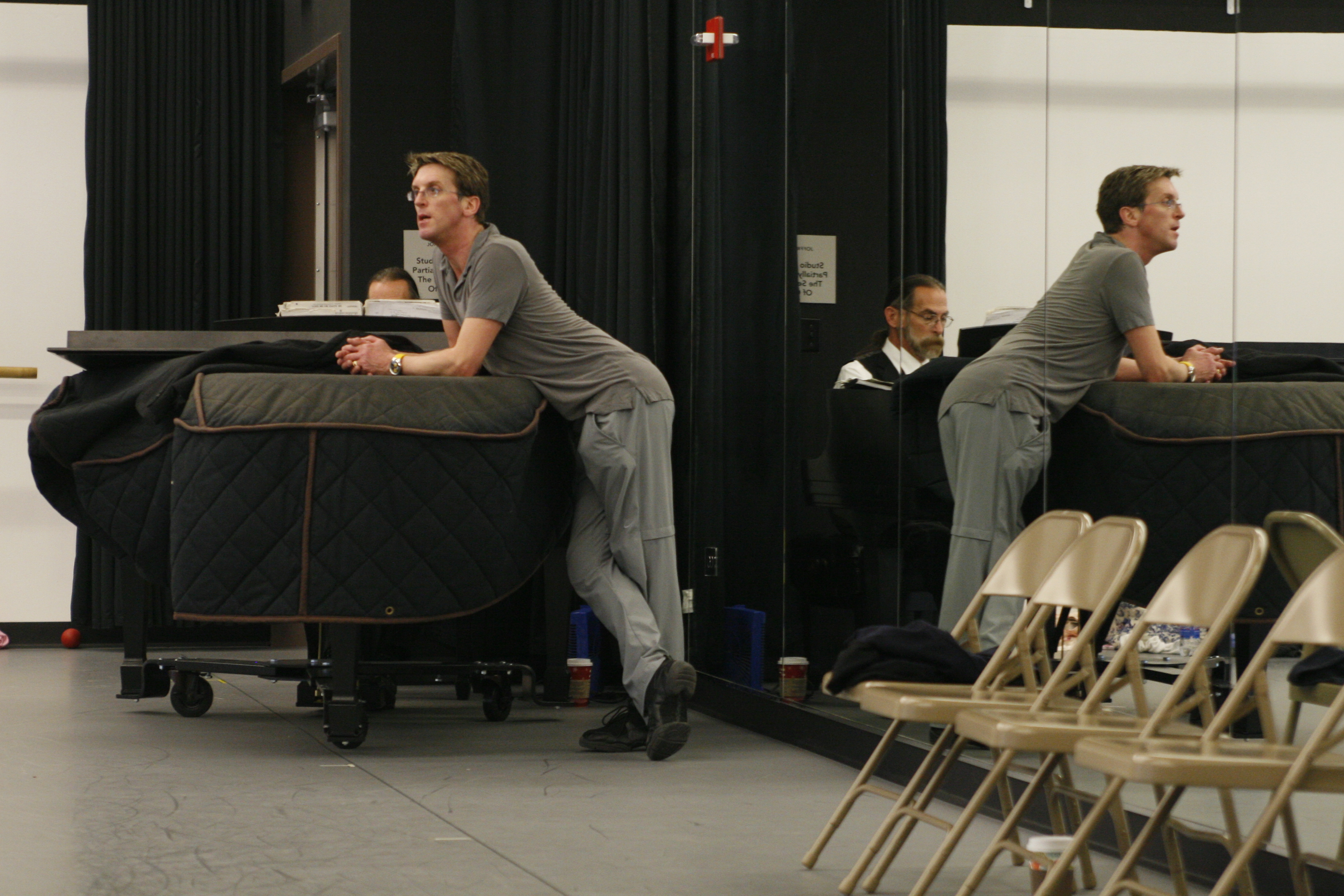*Please note this article was originally posted at J Pointe, the official blog of the Joffrey Ballet.
Watching Ashley Wheater teach company class at the Joffrey Tower studios, you really get a sense of just how much he loves his job. Calmly leading the group, he intuitively weighs what is needed to get them ready for rehearsal and for the upcoming performances. “I am one of them,” he says. He is quick to offer a correction or word of encouragement to a dancer flying by mid-air. This is his forté. After changing an intricate petite allegro combination (to make it even more difficult), he notices some confused looks on the dancers faces. “Is it funky?” he asks, and after some thought, changes it back to the original version. It is that give-and-take, a conversation and a respect that flows between teacher and student, dancer and director that makes the company so cohesive. “It’s the constant energy that we have every day,” he says, that makes things fun. “We’re working together in the studio because we all want to be here. It’s too hard if you don’t like your job.”
In the last four years since Wheater was named Artistic Director, the Joffrey has been through what he calls a renaissance. By adding some talented younger dancers, bringing in international choreographic talent and introducing a broader range of works, he changed the look and feel of the company, re-energizing the dancers as well as the audience. “There’s a certain stepping stone to how you can progress,” he says. “The path is crucial.” But for Wheater, the path was also simple. Diversity. Incorporating classical ballets (Cinderella, Giselle) with new ballets (Othello, Pretty BALLET), commissioning new contemporary works (Crossed, Age of Innocence) while still paying tribute to the founders Robert Joffrey and Gerald Arpino (Reflections, Postcards, The Nutcracker), he has put together a dense repertoire that showcases talents across the dance world. He credits Lar Lubovitch’s Othello as the turning point. “The response was unbelievable,” remembers Wheater. “They made it their own. It was commitment from every single person, not just the principals. Everyone taking the responsibility and fulfilling their part.”
What Mr. Arpino dubbed the “all stars/no stars” policy at the Joffrey is still in place. There is no hierarchy or ranking of the dancers, which allows more opportunities for everyone. Wheater believes that giving dancers opportunities is what builds great artists and he makes a pointed effort to include works in the repertoire that are accessible to everyone. This approach is evident in the All Stars program opening October 13th. Two Balanchine works display very different characteristics: Stravinsky Violin Concerto pays homage to the composer with Russian-flavored folk dancing incorporated into the ensemble piece — look for Victoria Jaiani and Temur Suluashvili, natives of Tbilsi, Georgia as stand outs – while, Tarantella is a bravura pas de deux that gives some of the smaller dancers a chance to shine. Christoper Wheeldon’s After the Rain is an emotional and complex piece set to Arvo Pärt and Jerome Robbins’ The Concert, a fun, comic romp through the minds of an audience on the stage.
Wheater’s enthusiasm for the company and the upcoming seasons (yes, plural!) is palpable. “I’m looking at the company and I see the stars of tomorrow.” And for those saying this is the best Joffrey has ever been, Wheater has only one response, “this is just the beginning…just wait!”

